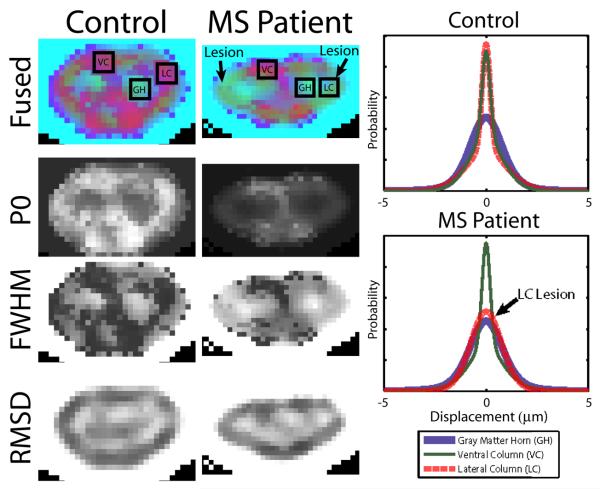Robust Maximum Likelihood Estimation in Q-space MRI
A. Landman, J. A.D. Farrell, S. A. Smith, P. A. Calabresi, P. C.M. van Zijl, and J. L. Prince. “Robust Maximum Likelihood Estimation in Q-space MRI”, In Proceedings of the 2008 IEEE International Symposium on Biomedical Imaging, Paris, France, May 2008 PMC2872926
Full Text:https://www.ncbi.nlm.nih.gov/pmc/articles/PMC2872926/
Abstract
Q-space imaging is an emerging diffusion weighted MR imaging technique to estimate molecular diffusion probability density functions (PDF’s) without the need to assume a Gaussian distribution. We present a robust M-estimator, Q-space Estimation by Maximizing Rician Likelihood (QEMRL), for diffusion PDF’s based on maximum likelihood. PDF’s are modeled by constrained Gaussian mixtures. In QEMRL, robust likelihood measures mitigate the impacts of imaging artifacts. In simulation and in vivo human spinal cord, the method improves reliability of estimated PDF’s and increases tissue contrast. QEMRL enables more detailed exploration of the PDF properties than prior approaches and may allow acquisitions at higher spatial resolution.
